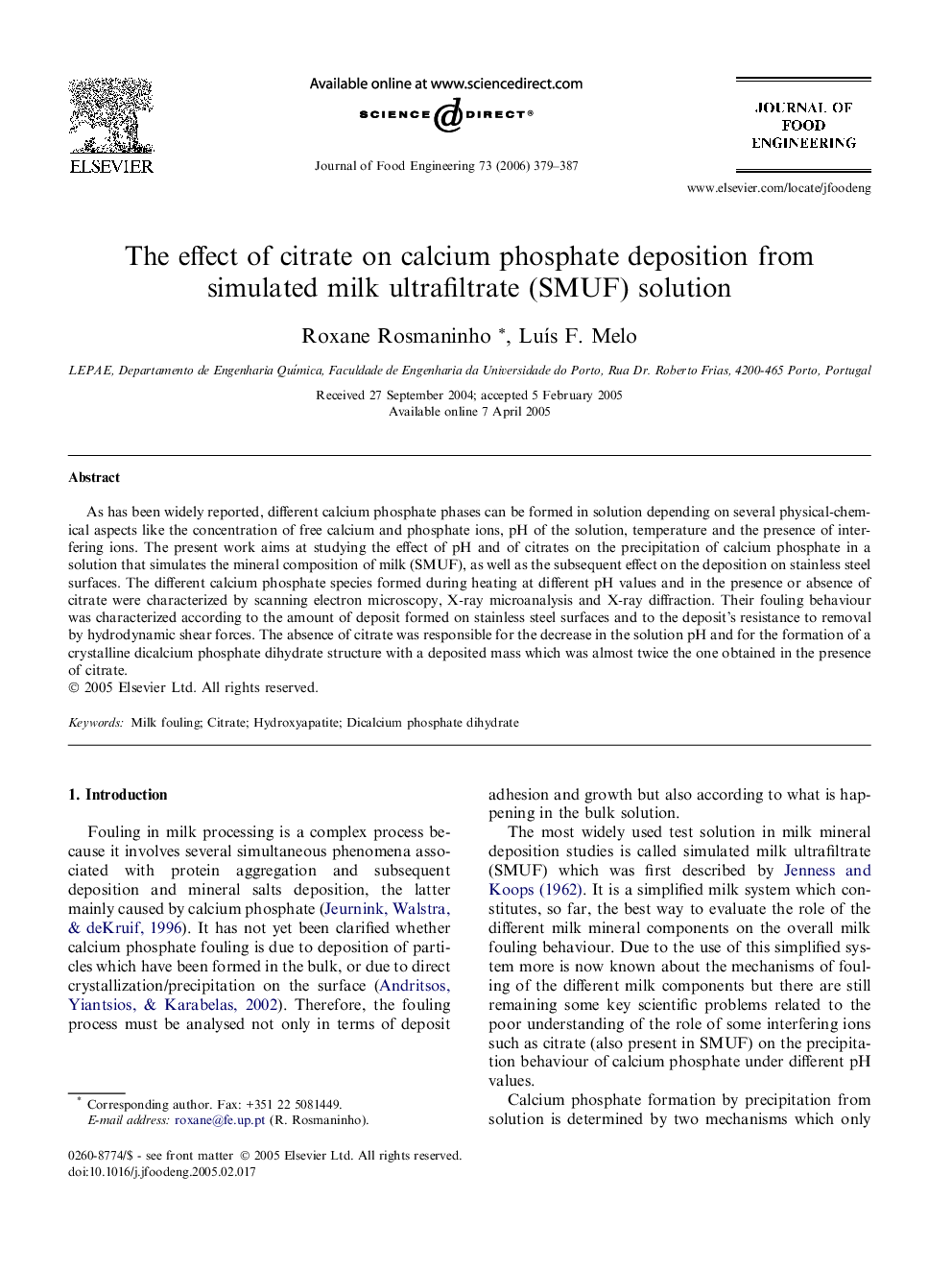| Article ID | Journal | Published Year | Pages | File Type |
|---|---|---|---|---|
| 226032 | Journal of Food Engineering | 2006 | 9 Pages |
As has been widely reported, different calcium phosphate phases can be formed in solution depending on several physical-chemical aspects like the concentration of free calcium and phosphate ions, pH of the solution, temperature and the presence of interfering ions. The present work aims at studying the effect of pH and of citrates on the precipitation of calcium phosphate in a solution that simulates the mineral composition of milk (SMUF), as well as the subsequent effect on the deposition on stainless steel surfaces. The different calcium phosphate species formed during heating at different pH values and in the presence or absence of citrate were characterized by scanning electron microscopy, X-ray microanalysis and X-ray diffraction. Their fouling behaviour was characterized according to the amount of deposit formed on stainless steel surfaces and to the deposit’s resistance to removal by hydrodynamic shear forces. The absence of citrate was responsible for the decrease in the solution pH and for the formation of a crystalline dicalcium phosphate dihydrate structure with a deposited mass which was almost twice the one obtained in the presence of citrate.
